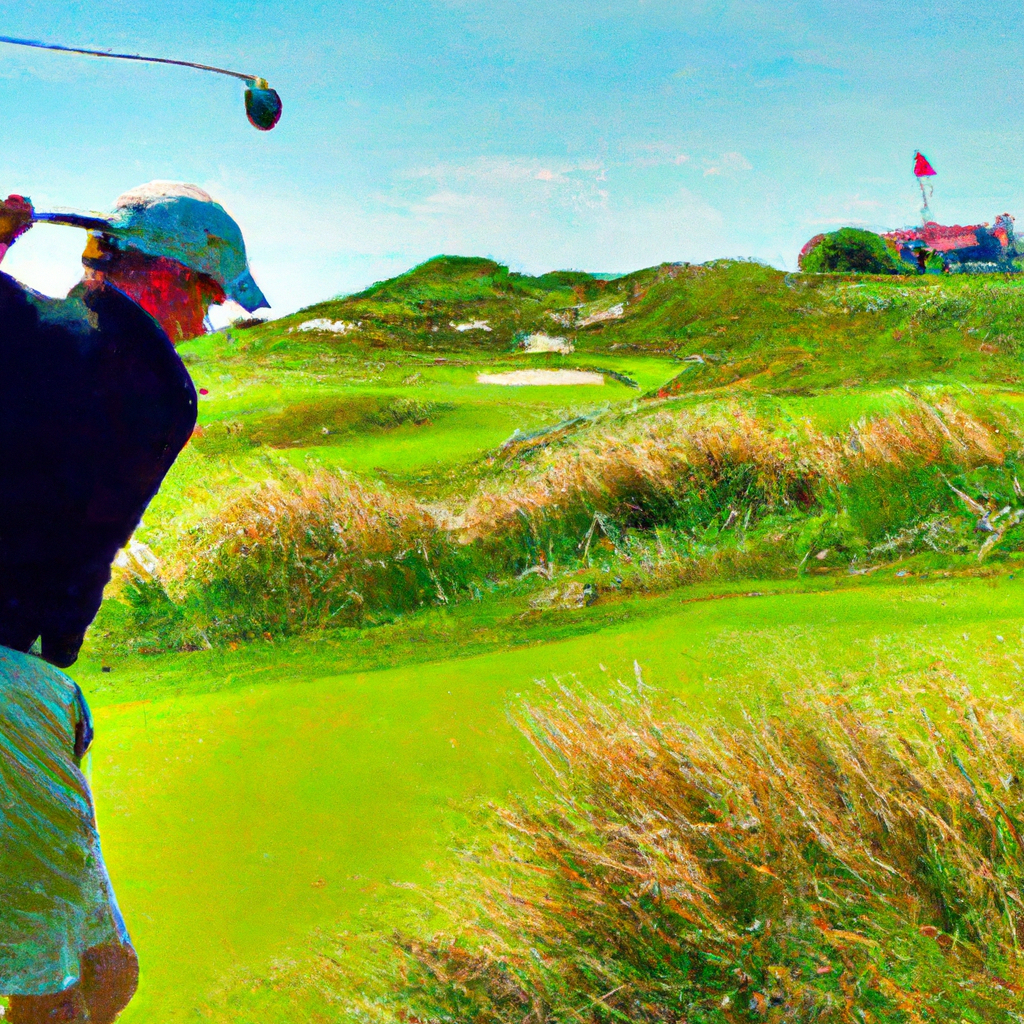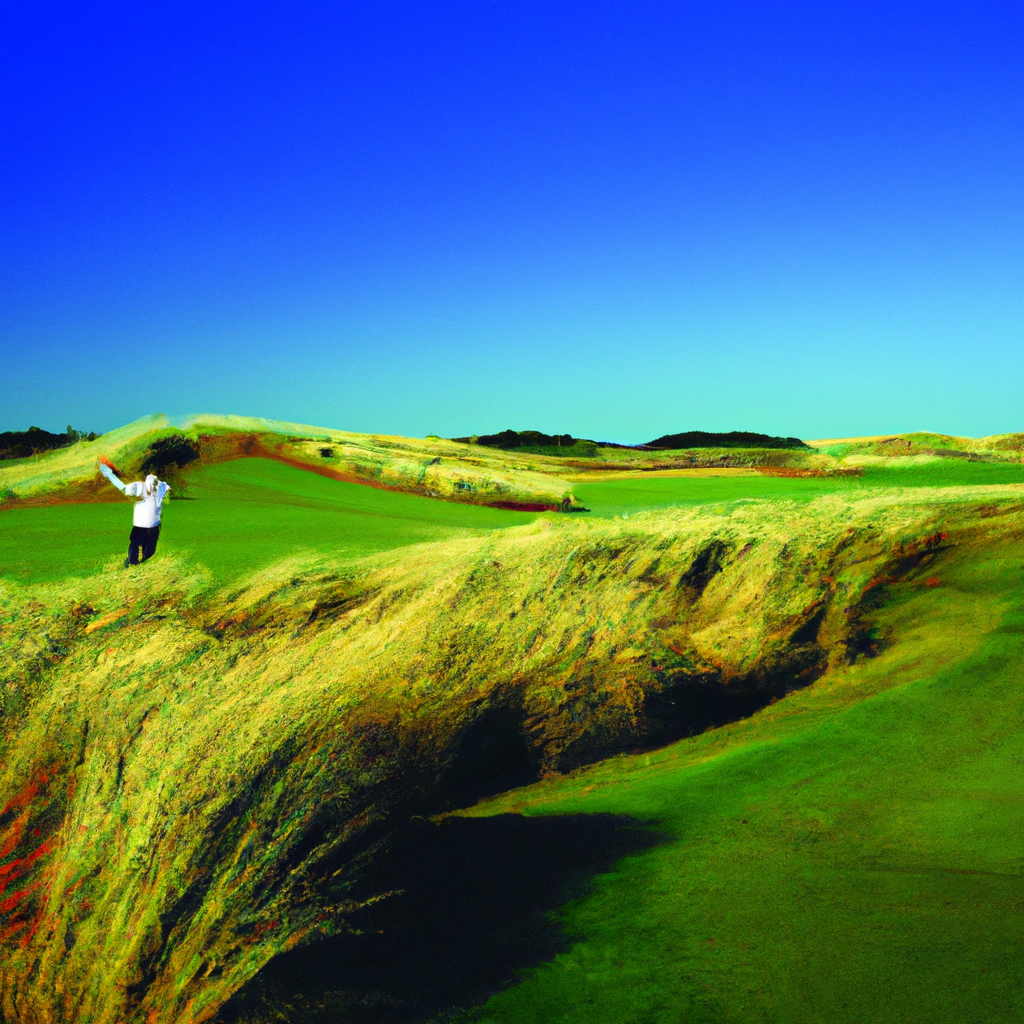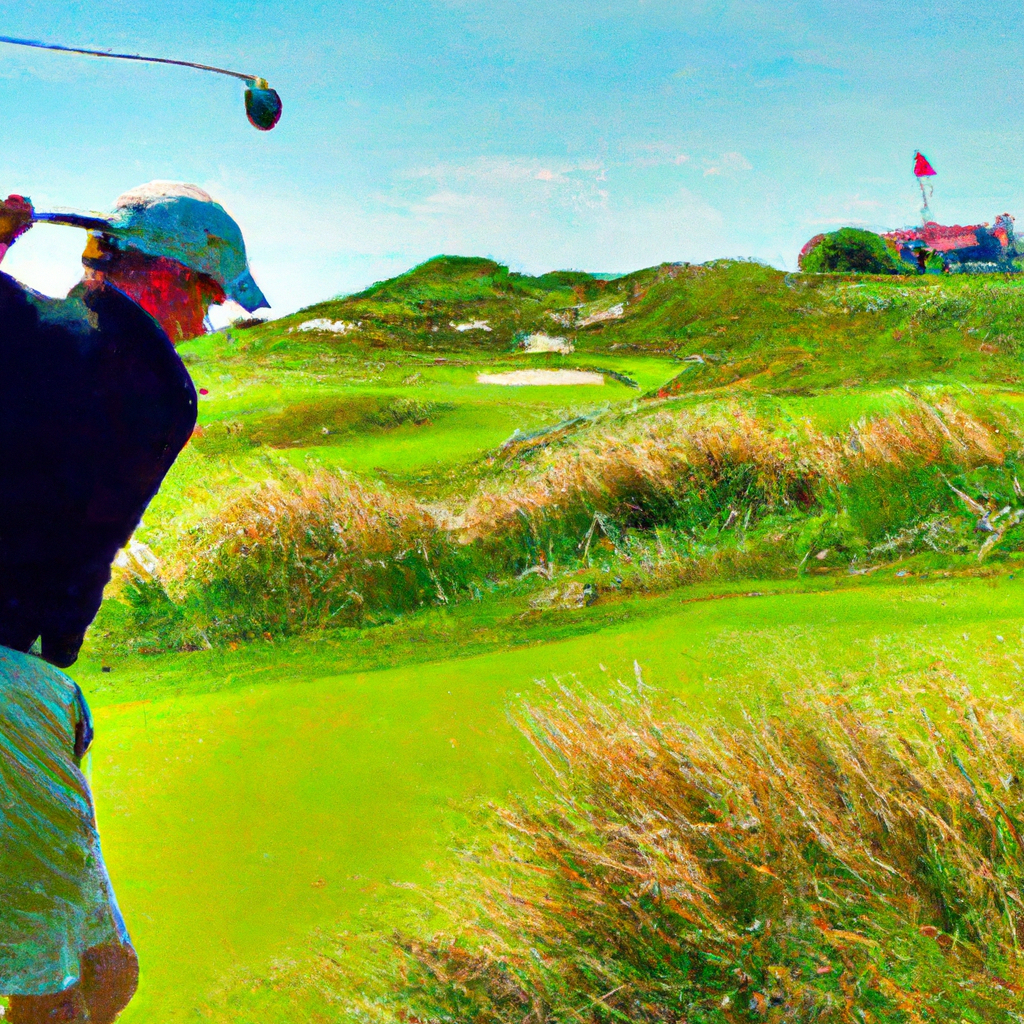We may earn money or products from the companies that may be mentioned in this post.
Did you ever wonder why golf courses are called links? It turns out that the term links originated from the Scottish word “hlinc,” which means ridge or sandy hill. Traditionally, golf courses were built on these sandy coastal areas, where the land seamlessly linked the shore and the inland. Over time, the term links became synonymous with golf courses, particularly those near the sea, boasting undulating terrain, tall grasses, and challenging conditions. Today, the name “links” evokes images of beautiful seaside golf courses that offer an authentic experience for golf enthusiasts worldwide.

Origin of the Term ‘Links’
Historical Background
The term ‘links’ originated in Scotland, the birthplace of golf. The history of golf and links courses can be traced back several centuries. It is believed that the game of golf was played on the sandy dunes and coastal lands, known as “links,” in Scotland as early as the 15th century. These areas were unsuitable for farming due to the sandy and often barren conditions, making them ideal for the game of golf. Over time, the term ‘links’ became associated with the type of terrain on which the game was played.
Etymology of the Word ‘Links’
The word ‘links’ itself has an interesting etymology. It is derived from the Old English word “hlinc,” which means “rising ground” or “ridge.” This term referred to the sandy or undulating coastal terrain where golf was traditionally played. As the sport gained popularity and spread to other regions, the term ‘links’ came to be used to describe any course that shared similar characteristics to the Scottish links.
Definition of a Links Course
Distinct Features
A links course is a type of golf course characterized by its coastal location and specific features. These courses are typically found in seaside locations, where the land meets the sea. Links courses are known for their natural landscapes, often incorporating sandy dunes, tall grasses, and rugged coastal vegetation. The absence of trees and the proximity to the seashore provide a unique playing experience, with gusty winds and changing weather conditions adding to the challenge.
Traditional Design Elements
In addition to their distinctive natural features, links courses also have certain design elements that set them apart. These courses often have undulating fairways that follow the natural contours of the land. Bunkers, strategically placed throughout the course, are typically deep and have rugged edges. The greens on links courses are usually firm and fast, reflecting the firm, sandy soil present in these coastal areas. Overall, links course designs prioritize strategy and shot placement, requiring golfers to adapt to changing conditions and employ creative shot-making.
Historical Evolution of Golf Courses
Earliest Golf Courses
Golf is believed to have originated in Scotland during the 15th century, and early courses were simple and rudimentary in nature. These early courses emerged on the common land, known as ‘links,’ in coastal areas. Golfers would play over the natural, rugged terrain, navigating the sandy dunes and obstacles presented by the landscape. These early courses were often characterized by irregular fairways and challenging elements that tested the golfer’s skill and creativity.
Development of Links Courses
As the popularity of golf spread, dedicated golf clubs and courses began to be established. The historical evolution of golf courses saw the development and refinement of links courses. Golf course architects, such as Old Tom Morris and Harry Colt, played a significant role in designing and shaping many of the iconic links courses that we know today. These architects worked with the natural landscape, enhancing the existing features and incorporating strategic elements that have come to define links golf.

Linking Golf and the Seashore
Geographical Context
The geographical context plays a crucial role in the development and existence of links courses. These courses are predominantly found in coastal areas, where the landscape meets the sea. The proximity to the seashore provides a unique environment for golf, with the ever-present influence of the ocean contributing to the challenges and allure of links golf. The coastal climate, characterized by cool sea breezes and varying weather conditions, further enhances the playing experience on links courses.
Coastal Topography Influence
The topography of coastal areas significantly shapes the design and layout of links courses. The sandy dunes that form along the coastline create natural undulations and contours, adding to the strategic elements of the course. The land’s natural slopes and irregularities provide golfers with a variety of shot options and challenges, requiring precise shot selection and accurate ball control. The unpredictability of the sandy terrain and the constant interaction with the seashore make links golf a truly distinctive experience.
The Role of Sand Dunes
Sand Dunes as Natural Hazards
Sand dunes, a prominent feature of links courses, serve as both hazards and design elements. In their natural state, sand dunes can pose challenges to golfers, with their irregular shapes and shifting nature making each shot unpredictable. Golfers must navigate their way through these hazards, avoiding high dunes, and strategically using them as targets or aiming points. The undulating nature of sand dunes adds a degree of difficulty to the game, demanding precise shot execution and strategic shot selection.
Constructive Use of Sand Dunes in Course Design
Golf course architects have learned to harness the potential of sand dunes to create memorable and strategic holes. By integrating the natural contours and slopes of the dunes into the course design, architects can shape fairways and greens to provide golfers with varying challenges and shot opportunities. Clifftop tees and greens perched atop sand dunes offer breathtaking views and require skillful shot execution. Sand dunes, when thoughtfully incorporated into course design, enhance the aesthetic appeal and strategic nature of links courses.
Challenges and Attractions
Characteristics of Links Golf
Links golf presents a unique set of challenges and attractions that distinguish it from other types of golf courses. The ever-changing coastal weather, with gusty winds and sudden shifts in conditions, adds an extra layer of difficulty to the game. The firm, fast fairways and greens require precision and control to successfully navigate, while the rough, tall grasses lining the fairways can penalize errant shots. The absence of trees means there is no natural shelter from the elements, demanding adaptability and strategic decision-making.
Appeal to Golfers
Despite the challenges, links golf has a strong appeal to golfers of all levels. The pure, natural beauty of the coastal landscapes combined with the joy of playing a challenging and strategic game creates a unique and fulfilling golfing experience. The unpredictable nature of links golf keeps golfers engaged and excited, as no two rounds are ever the same. The opportunity to play on courses with long and storied histories, where golf traditions have been shaped and celebrated, adds to the allure of links golf.
Links vs. Parkland Courses
Contrasting Course Types
Links courses and parkland courses represent two distinct types of golf courses with differing characteristics. While links courses are typically located along coastlines, parkland courses are found inland, often surrounded by trees and lush vegetation. Parkland courses offer a contrasting environment with a more manicured and picturesque landscape.
Differences in Terrain and Aesthetics
Links courses are known for their undulating fairways and greens, sandy dunes, and rugged coastal vegetation. In contrast, parkland courses feature gently rolling fairways, manicured greens, and a variety of trees and foliage. The absence of trees on links courses provides expansive views and an open, wind-swept feeling, whereas parkland courses offer a more sheltered and serene ambiance. The terrain and aesthetics of each course type contribute to the distinct playing experiences they offer.
Renowned Links Golf Destinations
St Andrews, Scotland
St Andrews, located on the east coast of Scotland, is widely regarded as the spiritual home of golf. It is home to the legendary Old Course, one of the oldest and most prestigious links courses in the world. Golfers from around the globe pilgrimage to St Andrews to experience the history, tradition, and challenging terrain of this iconic links course.
Ballybunion, Ireland
Ballybunion, situated on the southwest coast of Ireland, is another renowned links golf destination. It is often regarded as one of the finest links courses in Ireland and offers stunning coastal views and a thrilling golfing experience. The rugged dunes and testing holes make Ballybunion a favorite among golfers seeking a true links golf adventure.
Royal County Down, Northern Ireland
Royal County Down, located in Newcastle, Northern Ireland, is consistently ranked among the top links courses in the world. Set against the backdrop of the Mourne Mountains and the Irish Sea, Royal County Down offers a breathtaking and challenging golfing experience. Its undulating fairways, strategically placed bunkers, and magnificent views make it a must-visit destination for any golf aficionado.
Modern Adaptations and Innovations
Incorporating Links Elements in Non-Coastal Areas
While traditional links courses are predominantly found in coastal areas, modern golf course architects have incorporated links elements in non-coastal regions. Inspired by the unique characteristics of links courses, inland courses have been designed to mimic the challenges and aesthetics of traditional links golf. These adaptations include the use of tall native grasses, undulating fairways, and strategic placement of bunkers to create a links-style experience in landlocked locations.
Creating Artificial Links Courses
In some instances, where natural coastal land is scarce, artificial links courses have been created. These courses use technology and design techniques to recreate the look and feel of traditional links courses. They often feature synthetic grasses, carefully crafted sand dunes, and even artificial sea views. While not true links in the strictest sense, these courses provide golfers with a taste of the unique challenges and beauty associated with links golf.
Preservation of Links Courses
Conservation Efforts
Recognizing the historical and cultural significance of links courses, conservation efforts aim to preserve and protect these unique golfing environments. Organizations, golf clubs, and local communities work together to ensure the sustainable management of links courses. This includes initiatives to protect the natural habitats and biodiversity within these areas, as well as historical preservation efforts to maintain the traditions and heritage associated with links golf.
Environmental Sustainability
With the growing emphasis on environmental sustainability, links courses are increasingly adopting ecologically responsible practices. This includes using water-efficient irrigation systems, implementing renewable energy sources, and promoting wildlife habitats within the course. By prioritizing environmental sustainability, links courses can continue to provide unforgettable golfing experiences while minimizing their ecological impact.
In conclusion, links courses have a rich history and offer a unique golfing experience that combines the challenges of coastal terrain with the beauty of the natural landscape. The term ‘links’ originated in Scotland, where the game of golf was played on the sandy dunes and coastal lands. Defined by their distinct features and traditional design elements, links courses have evolved over centuries to become iconic golfing destinations. The geographical context, influence of coastal topography, and constructive use of sand dunes contribute to the allure and challenges of links golf. Despite the difficulties, links golf has a strong appeal to golfers, offering a deep connection to the traditions and natural environment of the game. As the golfing world evolves, maintaining and preserving these storied courses through conservation and sustainability efforts ensures that future generations can continue to enjoy the unique experience of links golf.
